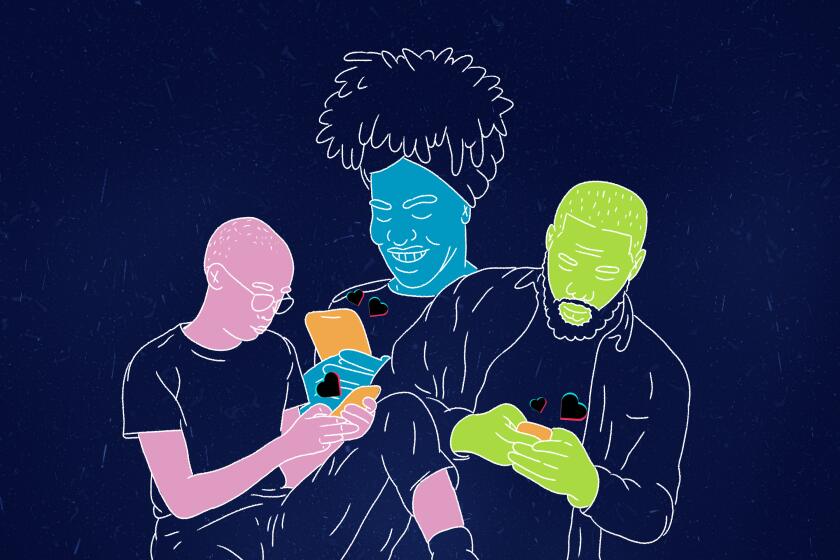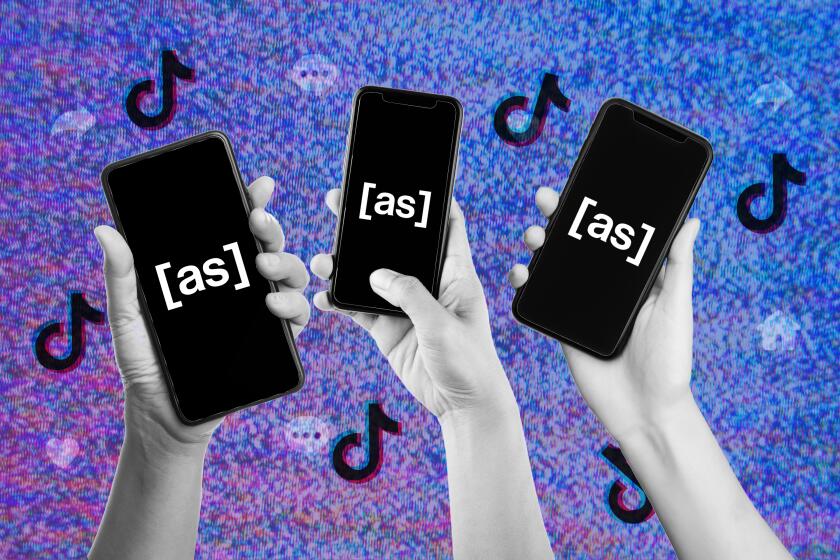Why are all of the celebrities crying on Instagram Live?

- Share via
What do Chloe Bailey, Lizzo, Megan Thee Stallion, Dua Lipa, country and pop singer Jessie James Decker, Dale Moss from “The Bachelorette,” TikTok star Charli D’Amelio, “Euphoria’s” Sydney Sweeney, countless influencers and maybe a couple of your mutuals have in common?
They’ve all shed tears during an Instagram Live — a.k.a. “cried on IG live.”
Behind-the-scenes of TikTok university for Black creators.
Ever since Instagram introduced ephemeral live broadcasts to the platform (they can be saved but are more often screen-recorded and posted to other social media platforms), celebrities, influencers and everyday people have had one more outlet to share every facet of their day-to-day lives in a way that seems even more real and relatable. But in a world where anything on social media feels curated, spontaneous displays of emotions — efforts to vent, raise awareness and connect with followers — are seen by some as either contrived, embarrassing or both.
That’s led to the memeification of crying on live. As in “imagine crying on live,” said by people who predict they’d never be in that situation. It’s the polar opposite of the normalize-talking-about-your-feelings-and-rejecting-toxic-energy therapy speak — basically, live your truth, but log off first.
It’s inspired skits on TikTok, particularly poking fun at influencers who cry during livestreams while apologizing or expressing that, actually, it’s OK to be vulnerable on the internet. In one TikTok, user @acrello, who has 6.4 million followers, posted examples of comments people make about people crying on live — “imagine crying on live” and “you soft for crying on live” — before lip-syncing “we do not care.” In a comment, he added: “if I’m soft for showing basic human emotions then I guess I’m soft.”
Why are people so uncomfortable with people bawling on Instagram Live? To some, it seems like an unhealthy substitute for talking to loved ones IRL. In certain cases — particularly during apologies — it seems manipulative. Sometimes it feels like people are using our urge to connect with others against us.
Crying on live could be seen as another form of vulnerability porn or “sadfishing,” a term for posting sad content online to garner sympathy, seek support or drive engagement. The term “sadfishing,” which peaked in 2019, was inspired by Kendall Jenner after her mother Kris hyped up Kendall’s plans to be “vulnerable” and share her “raw story,” only to announce her partnership with Proactiv.
While a video or a notes app apology feels scripted, tears on a livestream are meant to feel spontaneous and raw. Part of the appeal of an Instagram live for a celebrity is that it allows them to address fans directly in a way that is (or at least feels) intimate and unscripted while still controlling the narrative. But the more famous someone is, the less likely they are to receive the benefit of the doubt that their emotions are real.
“The celebrities that we saw in the past in mainstream media were very carefully curated by other people to cater to a fan base,” said Jenna Drenten, an associate professor of marketing at Loyola University Chicago. “Today we have things like Instagram Live, Cameo, TikTok, these very of-the-moment, always-on platform features, where celebrities can convey this real-time, behind-the-scenes perspective of their lived experiences.”
The pro is that these tools give them “a chance to be more human,” she said. The con is that fans, and often the media, view anything a celebrity does as content.
The nostalgic Adult Swim bump trend highlights the creative potential of the young social media app.
“There’s a perspective that any tears are only for entertainment, because celebrities are always for our own entertainment, for fans entertainment,” she said.
On Aug. 15, two days after the music video for her new single “Rumors” featuring Cardi B dropped, Lizzo hopped onto Instagram Live. The song, full of her usual self-confidence and swagger, is about brushing off haters on the internet (“Sick of rumors/But haters do what they do”). But instead of celebrating the success of the song, she admitted that sometimes mean comments on the internet do bother her. Sitting in a restroom with a full face of makeup, a wig cap and a gray zip-up sweater, tears welled in Lizzo’s eyes as she opened up to thousands of followers — who in return sent comments full of support and heart emojis — about dealing with cyber-bullying.
“On the days when I should feel the happiest, it just — I feel so down,” she said.
The live isn’t available on Lizzo’s Instagram account, but it’s easy to find. Soon, fans published screen recordings of the clip to YouTube and Twitter. Blogs and news outlets wrote about it; her haters made fun of her for crying on live; and her followers and supporters — including Cardi B — criticized the internet trolls for pushing her to that point.
Lizzo reappeared on live later that week. “Don’t worry about me … I have several forms of therapy, including a therapist,” she said in the video, while sitting in front of a giant chocolate cake decorated like her hand from the “Rumors” music video. “I’m okay! But just know that I’m the kind of artist that is going to be completely transparent if it’s necessary to start a conversation for some progress.”
Her initial video was part of a subgenre of crying on live — women, particularly Black women, resetting the narratives (and dispelling rumors) circulating around them. This was the flip side of that.
Crying leads to catharsis, and catharsis leads to peace of mind. Or as Lizzo put it: “Having my Cake and eating it b—.”
More to Read
Sign up for The Wild
We’ll help you find the best places to hike, bike and run, as well as the perfect silent spots for meditation and yoga.
You may occasionally receive promotional content from the Los Angeles Times.













